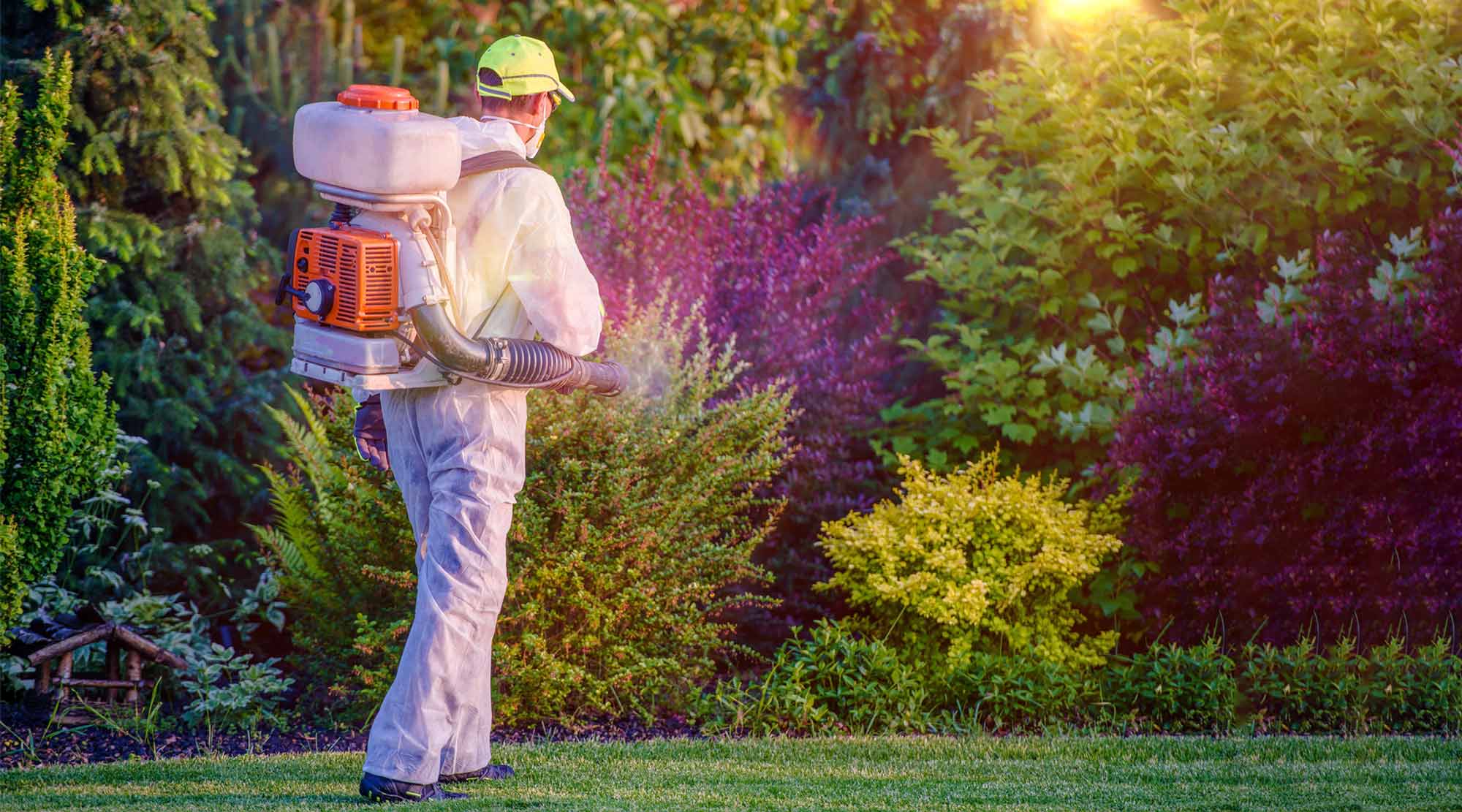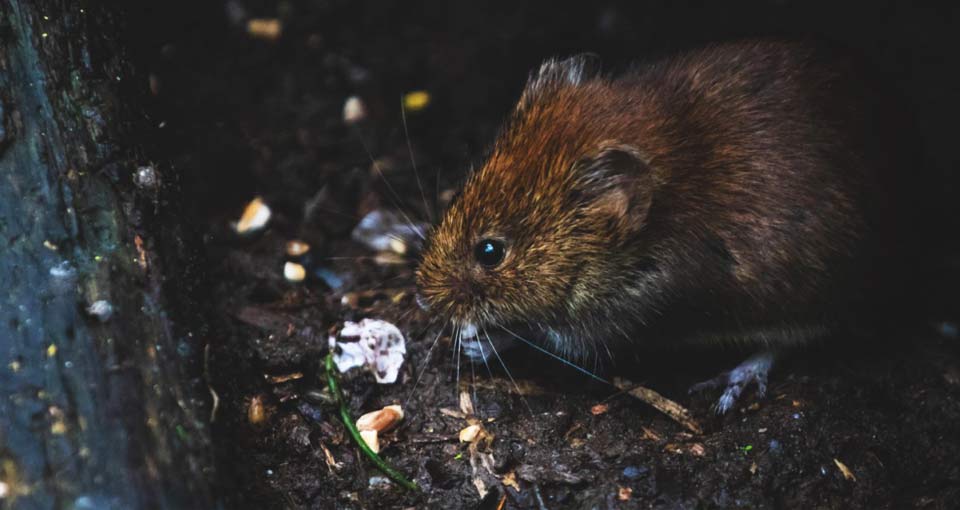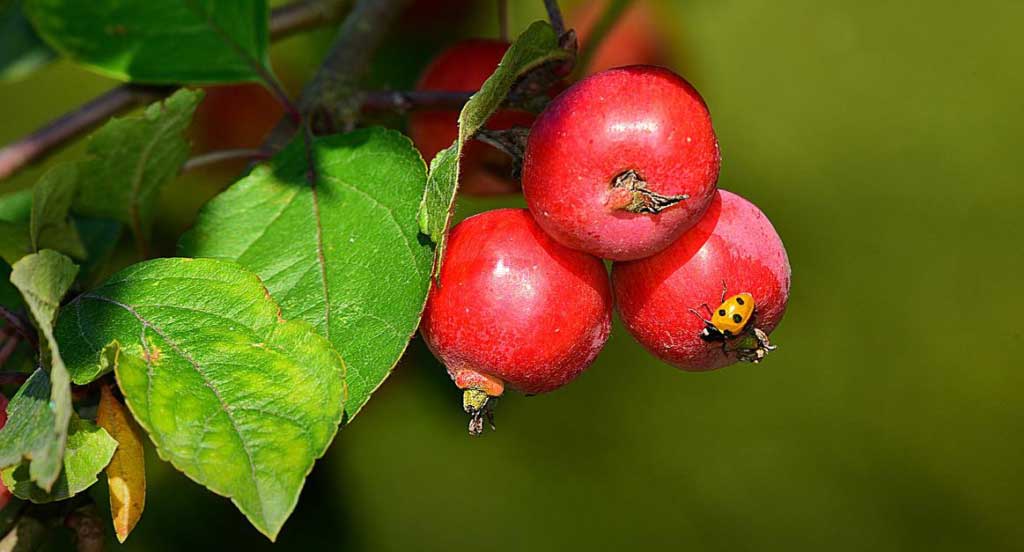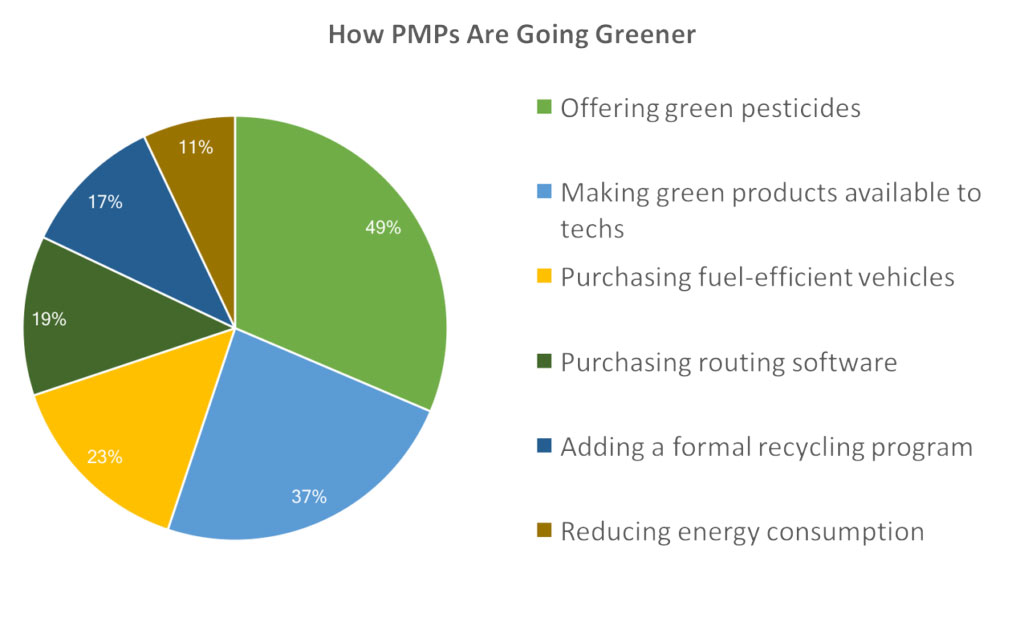Integrated Pest Management: A Guide to Growing a Greener Pest Control Business
8 min read

Pest control is considered a recession-resistant business because people will pay to get rid of pests, regardless of how the economy is doing. But as consumers learn more about the dangers pesticide chemicals can pose to health and about pesticide’s environmental risks, they’re increasingly looking for greener alternatives.
A 2020 survey by Pest Control Technology (PCT) found that “86% of PMPs [pest management professionals] characterize their markets as environmentally conscious,” making it “clear that green solutions can be important to competitive strength.”
If you want to grow your pest control business, you need to stop focusing on pesticides alone and consider integrated pest management. By using greener methods to deal with pests, you can charge premium prices and lure business away from your spray-focused competition.
In this article, you’ll learn:
- What Is Integrated Pest Management?
- Integrated Pest Management Methods
- The Integrated Pest Management Process
- Try OptimoRoute to Make Your Business Greener and More Efficient
What Is Integrated Pest Management?
Integrated pest management (IPM) is a pest management strategy that focuses on long-term solutions that have minimal impact on human health and the environment.
IPM programs use current, in-depth information on the life cycles of pests and their interaction with the environment. In a company with an IPM program, pesticides are a last resort to deal with pest problems. Other tactics, like creating barriers to prevent pests from entering your home or by using traps to remove them once they do, are preferred solutions.
The goal of integrated pest management is to deploy the use of pesticides only when absolutely necessary to control pest populations. Companies that put customers on a recurring maintenance plan with regularly scheduled spraying are not practicing IPM.
There are many advantages of an integrated pest management program for consumers, public health, and the environment.
When it comes to the environment, IPM
- slows the development of pesticide resistance,
- maintains a balanced ecosystem, and
- reduces the risk of groundwater contamination.
The benefits of IPM on public health include
- less public exposure to pesticides
- fewer issues related to pesticide residue, like having it end up in food.
For consumers who need pest control, IPM is advantageous because it
- focuses on finding the source of the problem, not just treating the effects
- is more cost-effective because it doesn’t require a maintenance program.
Disadvantages of integrated pest management
The biggest disadvantages of IPM over traditional pest control methods involve education and time. Before you can choose IPM over traditional spraying, pest managers need to learn the IPM methods involved and the best way to implement them.
The other downside is that it can take longer to eliminate the problem because managers may have to try a few different methods before finding one that works.
Integrated Pest Management Methods
There are several methods that IPM practitioners can use to reduce pest issues. The pest type and the severity of the problem will determine which method or methods are needed.
Cultural control methods create less favorable environments
Cultural methods focus on making the environment less favorable. Cultural practices are among the oldest pest control methods, and they focus on minimizing pest problems by removing the conditions the pests need to live, such as food, water, and shelter. This way ecology gets in the way of the pests, rather than a pesticide.
BioTech Pest Management recommended cultural controls to solve a rat infestation problem for a customer who had a front garden next to a cluttered crawl space. This combo gave the rats a food source and a place to live.

With no food or place to burrow, the pests will leave. Alternatively, by keeping the garden, the customers would have had to get on a monthly pest maintenance plan.
Physical control methods create barriers or remove pests
Physical control methods, also called mechanical controls, of IPM reduce pest problems by creating physical barriers or physically trapping and removing pests if they’re already present. The goal here is preventive; you’ll want to keep them from getting into a space, and if they do, you’ll want to physically remove them before they become a problem.
For small rodents, like mice, or cockroaches, which are built to survive almost anything, including living without a head for up to a week, using physical methods to prevent them from getting into your home is the best management method. This method would include sealing cracks and other openings that lead inside, installing door sweeps to seal the gap between the door and the threshold, and trimming shrubbery from around your home.
Biological control methods focus on natural predators
With biological pest control, you suppress pest populations by using their natural enemies, parasites, and diseases in a targeted way. This method is best used for pests that would impact your lawn or garden rather than your home.

For instance, aphids are some of the most destructive insect pests to fruits and vegetables. And because they’re resistant to several types of insecticides, reaching for the chemicals to manage aphids might instead kill their natural predators, like ladybugs. With IPM, you’d encourage beneficial insects by skipping the spray and providing a hospitable home for predators with overwintering sites, mulches, flowers, and ground covers.
Chemical control methods use conventional pesticides
If the integrated pest management practices mentioned above don’t control a pest population, then it’s time to turn to chemical methods. Chemical controls use pesticides to kill pests by acting as direct toxins (nerve poisons, stomach poisons, etc.).
But even when chemicals are used, there are organic options that have minimal impact on the environment, and demand for these choices is increasing. The organic pesticides market is expected to reach more than $8 billion by 2025.
The Integrated Pest Management Process
Now that you know about different IPM practices, consider using this process to select and evaluate the best IPM approach to deal with pests:
- Identify the pest. Before you can choose a management method, you have to know exactly what pests you’re dealing with. That’s why the first step is pest identification.
- Determine the severity of the problem. One bug or mouse in a house isn’t a pest infestation and doesn’t require intervention. You need to have an idea of how many pests there are before you can pick a control method. For example, sticky traps are often set out and monitored to determine how many pests there are and where they might be located.
- Assess the management options. Once you identify the pest and determine the size of the problem, you can weigh the pros and cons of each control method to deal with them.
- Select and apply one or more options. You might find you need more than one IPM method. For example, if you have a mosquito infestation in your yard, you may need to use cultural control methods to remove excess water from your yard and stop them from reproducing. You also might need a chemical method to deal with the adult mosquitoes that are already there.
- Measure the success of the IPM method. After the method is applied, set more traps, and monitor the home and yard for new signs of pest damage to see if the control method has worked or if the problem persists. If it does, you might need to try a new method, like pesticide applications.
Software Solutions That Help Your Business Go Green
PCT’s findings on the naturals market also found pest control specialists were making their business greener by integrating route management software in an effort to reduce miles driven to clients and thus reduce their carbon footprint.

In pest control, your employees are always out in the field, driving to customers’ homes and businesses. So much time in the car can lead to high fuel usage and more greenhouse gas emissions.
OptimoRoute’s route optimization software helps you go green by finding the most efficient routes and sending the routes straight to employees’ phones. And according to the Environmental Protection Agency (EPA), driving cars more efficiently can have a big impact on greenhouse gas emissions — and it will also reduce your daily operating costs.
By informing customers of all the ways your business is reducing its environmental impact, you can grow your business. According to an IBM study, more than “70% of recent survey respondents said would pay, on average, 35% more for eco-friendly brands.”
Other ways OptimoRoute helps your business:
- Imports orders and gets the most efficient routing for all your drivers at once.
- Calculates allowed working hours and reduces overtime costs.
- Uses SMS or email to let customers know when your employees will arrive. Your customers will know exactly when you’ll arrive, so you won’t risk missing them and have to reschedule.
- When a last-minute pest emergency comes up, routes will be automatically recalculated and sent to drivers. Your technicians will still be able to make their appointments and keep your customers happy.
OptimoRoute takes care of planning deliveries so you have more time to grow your business.
Tomato Mountain increased efficiency and reduced its carbon footprint with OptimoRoute
Tomato Mountain is a Wisconsin-based farm that delivers local, sustainable produce to customers’ doorsteps. Before OptimoRoute, they were manually planning their deliveries. This process left room for human error, which was inefficient and costly.
By letting our software automatically plan the most efficient routes for their deliveries, Tomato Mountain Farm increased delivery efficiency by 300%. With better route planning, Tomato Mountain reduced unnecessary back-and-forth for drivers, which reduced their carbon footprint.
Our weekly planning feature also lets the company assign consistent weekly delivery days for customers based on geographical clusters. Customers in the Northwest receive deliveries on Saturdays. The Southwest is serviced on Sundays, and the remaining territories get deliveries on Thursdays or Fridays.
Integrated pest management FAQs
How does integrated pest management affect the environment?
By using IPM, you can minimize your use of pesticides and other chemicals that harm the ecology. In addition to protecting human health by decreasing your use of chemicals, IPM has a positive impact on the environment by reducing water pollution, decreasing greenhouse gas emissions from chemical manufacturing, and protecting biodiversity.
Are IPM practices and organic methods the same thing?
Although organic methods are an important part of any IPM program, they are not the same thing. Organic pesticides are regulated by the U.S. Department of Agriculture (USDA) and must be composed of natural ingredients. IPM, on the other hand, is a strategy that focuses on using the least amount of pesticides necessary to control pests while minimizing environmental damage.
Do most growers use IPM?
Many growers practice IPM, but there are still a number of conventional growers who use pesticides liberally.
Try OptimoRoute to Make Your Business Greener and More Efficient
With 88% of consumers wanting to be eco-friendly and are looking for companies to help with that endeavor, offering integrated pest management is a sound way to grow your pest control business. It will help your customers solve their pest problems by using greener solutions.
To help make your business greener and reduce your operating expenses, consider investing in OptimoRoute’s route management software, too.
Try OptimoRoute free for 30 days to start making your company more efficient and reducing its carbon footprint.
Try OptimoRoute™ for Free
No installation or credit card required


